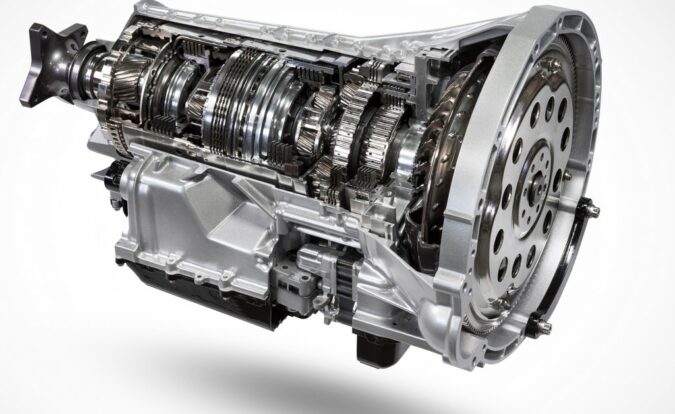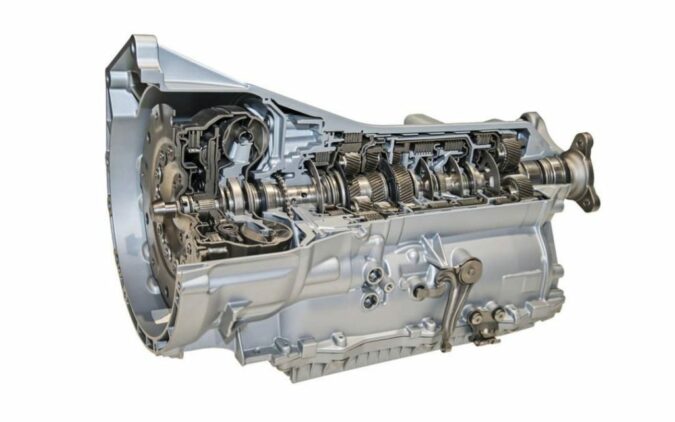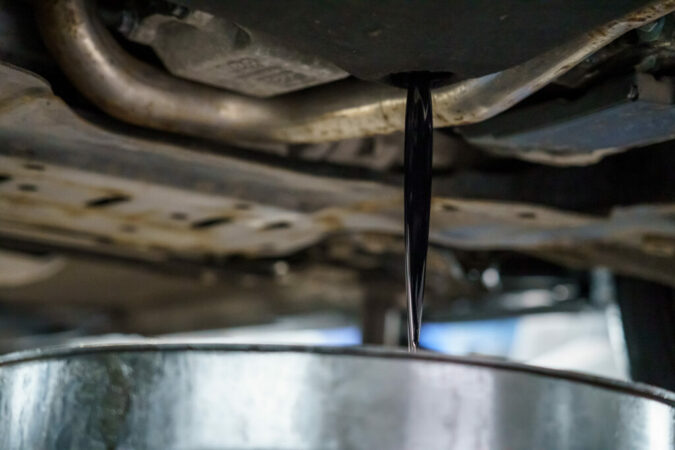Are you planning to flush the transmission fluid and you are interested in learning the transmission fluid change cost Honda? Well, if that is the case, then you are in the right place because this article will be all about this topic.
- Automatic Transmission
- Pros & Cons
- Honda Automatics
- Fluid Type
- Should You Flush?
- How To Flush?
- Cost To Flush
- Final Conclusion
- FAQs
Doing your own research before you go out there and visit a mechanic should be your top priority. Why we are saying this? Well, because it is true. You need to learn the average cost of a service before you visit a mechanic’s shop in order not to get ripped off.
And trust me, there are a ton of people out there that will want to rip you off and require you to pay a lot of money for a simple service such as flushing the transmission fluid.
Yet, even though this is a rather simple procedure, in fact, it requires some tooling and equipment because as you probably know the transmission is at the bottom of the car. So, you will definitely need a lift for this service. But you shouldn’t worry because we are going to explain everything in this article.
First, we are going to learn what is a car transmission and the types of transmissions used in Honda vehicles. We will learn how they work, and the pros and cons. Then we will discuss whether you need to flush the fluid and what is the right interval to do this service. After that, we will learn how to flush as well as the transmission fluid change cost Honda. So, if you want to learn more, follow along.
Honda Automatic Transmission
Now let’s take a look at what is an automatic transmission before we cover the transmission fluid change cost Honda and the transmission service cost. Why do we think that this is necessary? Well, there are a ton of people out there facing similar issues. So, this would be a nice introduction to the topic for them as well.
So, what is an automatic transmission? Well, let’s imagine the transmission as a big torque conversion box that is installed between the engine and the driveshaft.
As you probably know, the engine idles at 800 RPM and when pushed hard, it can go up to 8,000 RPM in some cases.
And transferring this rotational force of the crankshaft directly to the wheels is not possible since the driveshaft will break and the car would be completely undrivable.
This is why engineers have come up with the idea to create a transmission. The transmission basically converts the rotational force of the crankshaft into torque and then the transmission passes this torque to the driveshaft and then to the differential and eventually to the wheels. So, your car is able to move.
What is interesting to note is that there are two types of transmissions. A manual transmission is where the driver goes through the gears manually. As well as an automatic transmission where the transmission does everything automatically.
And for this article, we are interested only in the automatic transmission, since this transmission requires regular Honda transmission fluid change and you need to learn the transmission fluid change cost Honda. But more on that in a bit. Let’s cover some of the pros and cons of these automatic transmissions.
Pros & Cons Of Honda Automatic Transmissions
Now as we covered automatic transmissions and learned something about its core concepts. We can slowly start to move on and learn more about the pros and cons of automatic transmissions.
This is another really useful piece of information because everything has its pros and cons. So, does the automatic transmission. Now let’s cover this quickly before we start understanding more about the types of automatic transmissions used in Honda and the transmission fluid change cost Honda.
Pros
Now let’s discuss some of the pros of running automatic transmission before we dive into the transmission fluid change cost Honda. What are the pros of running an automatic?
Well, when it comes to automatics, there are a lot of pros, to be honest. The biggest pro is probably the ease of use.
Automatic transmissions as we mentioned are doing everything on their own. So, you don’t have to worry about engaging and disengaging the clutch as you do in manual transmission cars.
You just put the car into drive and the car moves forward and goes through the gears based on the vehicle’s speed. And downshifts when you remove the pressure from the throttle.
This makes the learning curve a lot smaller in comparison to a manual transmission. With an automatic transmission car, you can be a really good driver after 1,000 miles. While in manual transmission cars you need at least 5,000 miles to feel confident with the transmission and learn how to shift well.
And the vast majority of transmissions used in the US market are automatics. This is why in this article we cover precisely the transmission fluid change Honda. Now let’s cover the cons of running an automatic transmission.
Cons
Now as we discussed the pros of using an automatic transmission, let’s take a look at the cons of having this type of transmission. There are probably some cons to it, right?
Well, technically, yes. Even though the main pro is the ease of use and the relatively low learning curve. There are still some cons to it.
Since it is so easy to use, the complexity behind the curtain is a lot higher compared to a manual transmission.
In an automatic transmission, you have a lot of complex engineering. There is a valve body through which ATF fluid is pushed when a certain solenoid activates. And this is only the tip of the iceberg.
This is why automatic transmissions are a lot more expensive to run. Both when it comes to maintenance as well as in terms of obtaining a car with an automatic transmission.
Fluid changes are mandatory and you should definitely learn the transmission fluid change cost Honda if you want to maintain your Honda transmission the right way. But more on that in a bit.
Another con worth mentioning is that these transmissions break down quite more often because of their complexity and also last a lot less when compared to manual transmissions.
And some of them are rather prone to developing issues. Especially CVTs that cannot handle a lot of torque and if you push them too hard, they just tend to fail. Also, if you don’t flush the fluid regularly, it will fail more often. This is why you need to learn the transmission fluid change cost Honda and make sure that you flush your fluid regularly. But more on that in a bit.
Types Of Honda Automatic Transmissions
Now let’s take a look at the types of automatic transmissions Honda uses nowadays. Knowing this is quite necessary because not all automatic transmissions in Honda are the same.
And different transmissions require a different approach when it comes to maintenance. As well as the type of fluid and the transmission fluid change cost Honda. This is why we need to cover both of these types and learn more about them and their method of action before we dive into the costs involved in this type of work. So, let’s cover this really quickly.
Honda Torque Converter Automatic
Now let’s take a look at the first type of automatic transmission used on Honda models. And this is the torque converter automatic transmission. Also known as the classic automatic transmission.
This is the case because this type of transmission was invented first back in the 40s. This design implements a mechanical transmission that works with help of hydraulic pressure and has a fluid coupling device between the transmission and the engine. This device is known as a torque converter.
Nevertheless, this transmission is rather complex. This type of transmission has planetary gear set inside and requires a lot of precision when it comes to designing and manufacturing these devices. This is why there are only a handful of companies that produce them and most of the carmakers simply outsource these devices.
How these transmissions work is rather simple actually. Inside the transmission, more precisely, at the valve body that is located at the bottom of the transmission, there are solenoids.
And based on your input, these transmission solenoids open and close. Pushing hydraulic fluid also known as ATF through the valve body and this action helps the transmission to upshift or downshift depending on the driver’s action.
Even though it is rather easy to explain, what is going on inside this device is rather complex. So, the transmission fluid has to be clean. Because if it’s not, you will face some problems like transmission shudder, jerking, and all sorts of other issues.
This is why you need to learn the transmission fluid change cost Honda. And more about that, we are going to cover later on. Now let’s discuss the second type of transmission often found on Honda models.
Honda CVT Automatic
The second type of transmission that we are going to cover before we learn more about the transmission fluid change cost Honda is the CVT automatic. So, what is a CVT automatic transmission?
Well, CVT is one of the transmissions that is getting more and more popular nowadays. Mainly because it improves fuel efficiency quite a bit and also delivers a smoother ride. But what does CVT stand for in the first place?
Well, the CVT abbreviation stands for continuously variable transmission. Unlike the torque converter that uses a planetary gear set for the forward speeds, the CVT uses a different approach.
Inside a CVT transmission, there are basically two pulleys that are connected to a belt. This transmission uses a steel V-belt that connects both pulleys.
These two pulleys are variable diameter pulleys and each pulley has two cone-shaped halves. And as these two cone-shaped halves move, the gear ratios change. This is a rather ingenious design that simply works really well. Because going from one to another gear ratio is rather seamless. The driver is not aware of this.
But there is a downside and that is that these transmissions can be rather loud. Especially when they start to wear down. The belt simply starts to create a lot of noise.
And compared to the standard torque converter automatic, these CVT transmissions last quite less and require rebuilding much more often. Some Nissan CVT transmissions often last less than 50,000 miles.
But luckily, Honda’s CVT transmissions are long-lasting if you pay the transmission fluid change cost Honda. But how much is this type of fluid change? Well, more on that, we are going to cover it in a bit. Now let’s discuss the fluid used in these transmissions.
What Type Of Transmission Fluid Does Honda Use
Now before we start discussing the transmission fluid change cost Honda, let’s take a look at the type of fluid that is used on these two applications (for further context, check out our guide on the 2014 Ford Fusion transmission fluid).
As we mentioned, there are two types of automatic transmissions used on Honda vehicles. The classical torque converter automatic and the CVT automatic. And both of these types of transmissions require a different type of fluid to be used.
Namely, the torque converter automatic as we mentioned works with the help of hydraulic pressure. This means that this type of transmission requires hydraulic fluid. This is a type of fluid that cannot be compressed.
The hydraulic fluid is also known as ATF (automatic transmission fluid). And, transmission fluid is often red in color. This is the same type of fluid that is used on power steering.
The CVT transmission on the other hand uses a different approach and a different type of fluid. The CVT transmission uses full synthetic automatic transmission fluid designed specifically for CVT transmissions.
This fluid is designed in such a way as to maximize the CVT transmission life and prevent wear. Also, this type of fluid is providing anti-shudder characteristics and helps the power transfer a lot smoother. So, you will not be able to hear that noise that we mentioned previously.
And the most important thing that we need to mention is that both of these fluids cannot be used interchangeably because they are not the same fluid. So, if you have a torque converter automatic, you need to add ATF.
While on the other hand if you have a CVT you need to use synthetic transmission fluid. But what is the transmission fluid change cost Honda? More on that, we are going to cover it in a bit. Now let’s discuss another quite interesting topic to us.
Should You Change Transmission Fluid
Another question that troubles a lot of owners who own cars with automatic transmissions is whether or not to pay the transmission fluid change cost Honda or not? Should you flush or not?
The simple answer to this question is definitely yes, you should definitely flush your fluid. And not only that, but you should also always check the transmission fluid level to ensure it’s not low as well as the condition of the fluid.
And unlike when it comes to checking your oil when you check the transmission fluid, you need to check it while the engine is running. This is the case because the fluid is not flowing and you cannot get a proper reading when you check the fluid while cold.
This is why you should never be afraid of removing the dipstick when the engine is warmed up (or fussing about whether you should check the transmission fluid while it’s hot or cold) and see the level and condition of the fluid.
The fluid should always be at the recommended level (in other words, not too much transmission fluid), and not only that, but you should also see if there are impurities.
If there are some metal flakes that reflect on the light, it means that this fluid has to go and be replaced with a new fluid. But what is the recommended mileage to change the fluid?
Well, this depends mostly on the factory-recommended intervals. Each car when purchased new, has service intervals on when you should visit the dealership for this service.
Usually, this interval is every 30,000 to 60,000 miles. Even though, we wouldn’t advise that you push the same fluid up to 60,000 miles because of increased wear.
So, keep this in mind. Pay the transmission fluid change cost Honda and call it a day. Or do it DIY. And more on that next.
How To Flush Transmission Fluid In An Automatic
Now let’s take a look at how transmission flush is done before we cover the transmission fluid cost Honda. How can you flush the fluid on your car? This would be really interesting for the DIY guys to learn. Not everyone wants to pay money for regular maintenance.
What is important to note when it comes to this type of maintenance is that in order for you to access the transmission, you will need to lift the car up in the air. So, this is not a job for beginners. But if you are intermediate and you have the right tools to lift the car up on ramps and drop the oil pan, then you will be good.
For this type of work, you will need a new filter, oil pan gasket, gasket maker, and of course ATF or synthetic fluid if you have a CVT.
The first thing you need to do is to place a big bucket underneath the transmission. Then slowly loosen up the bolts of the pan and the fluid should start pouring from the top. Some pans have drain bolts and most of them don’t. So, you need to work your way around this.
Then once you dropped the pan, clean the mating surface of the pan and install the new filter, as well as the new gasket, and apply some RTV gasket maker. Then tighten all the bolts up to spec.
Once you did that, just remove the bolt from the side of the transmission and pump in the new fluid. Once the transmission fluid starts to leak from the bolt hole, you know that the transmission is full. Start the engine to check the transmission fluid level. If the level is good then you are good for another 30,000 miles.
Transmission Fluid Change Cost Honda
But I don’t want to flush my transmission fluid, I want to pay the transmission fluid change cost Honda. How much is it to flush the fluid at a shop?
The average cost to flush or change the transmission fluid at a shop is $140 according to some sources that we came across. This is often the cost if you do this work at an independent shop.
If you opt for the dealership, on the other hand, you can expect to pay somewhere in the range of $150 and $250. Dealerships are always on the more expensive side. So, it might be better to find an independent Honda shop, rather than take it to a dealership.
Transmission Fluid Change Cost Honda: In Conclusion
In this article, we have covered quite a bit when it comes to the transmission fluid change cost Honda. First, we covered what is automatic transmission and the pros and cons of automatic transmissions.
Then we covered the types of automatic transmissions that Honda uses in their cars. As well as the types of fluid they are running on them. Then we learned whether you should flush and how often. As well as how you can do it by yourself. Lastly, we discussed the transmission fluid change cost Honda and elaborated on the prices.
FAQs On Transmission Fluid Change Cost Honda
Now let’s answer some frequently asked questions.
How Much Is A Transmission Flush
The average cost to flush transmission fluid is somewhere in the range of $150 to $250. If you want to get this service for cheaper, we would advise that you avoid dealerships, since these often will require you to pay $250 or even more for this service.
Where To Get Transmission Fluid Change
There are a ton of places where you can do this service. There is Firestone Complete Auto Care, Goodyear Auto Service, Jiffy Lube, Pep Boys, Walmart, and many other places. These are some of the many that are out there.
Where Do You Put Transmission Fluid
When it comes to transmission fluid, it is worth noting that you don’t have a fluid reservoir. You need to either put it in the dipstick tube or you can reach and remove the bolt from underneath the car that is located on one of the sides of the transmission. Then pump new fluid into the transmission. Just make sure that you don’t overdo it because you can ruin the transmission if you have too much fluid in it.
How Much To Service Transmission
Servicing a transmission cost when it comes to fluid changes is somewhere in the range of $150 and $250. It is not that expensive, this is why you should never skip your intervals.
How To Refill Transmission Fluid
Refilling transmission can be done by removing the bolt that is located on the side of the transmission. Then you need to pump in the new fluid inside the transmission. You can also try to top it off from the dipstick tube. But there is a chance of overfilling it. This is why you need to be careful when you put new fluid in and make sure that you maintain the levels.
How Many Miles To Change Transmission Fluid
Transmission fluid should be changed between 30,000 and 60,000 miles. We would recommend that you do this service at 30,000 miles, just to be on the safe side.




